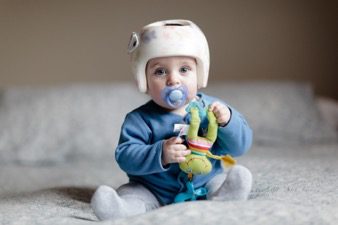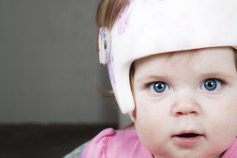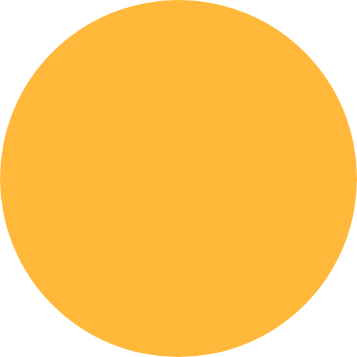Cranial remolding orthoses (CRO) or baby helmets can be used in the treatment of deformational plagiocephaly, brachycephaly (also known as flat head syndrome) and other conditions. The objective of the remolding helmet is to leave a space where the concerned area (flat spot) is and maintain contact of the head in the other areas. As the head grows, it will fill into the space and the growth will slow in the areas of contact. The goal is to try to achieve a more symmetrical shape of the head at the end of treatment. The length of treatment time varies depending on the severity and age of the infant.
Positional Plagiocephaly, also known as flat head syndrome, is the term used to describe a head shape that is asymmetrical and characterized by a flat area on one side. Plagiocephaly is caused by prolonged pressure (such as laying on one side for a long time) on the part of the head that creates a “flat spot”. The opposite side of the head can have a protrusion at the forehead. There can also be uneven positioning of the ears and eyes.
Brachycephaly is a head shape that is flattened across the back resulting in a wider head. The forehead can also protrude more in the front. It is similar to plagiocephaly as both conditions are caused by long periods of pressure in one spot on the growing skull.



The incidence of plagiocephaly and brachycephaly has increased in the past several years to several factors including:

Each infant with plagiocephaly or brachycephaly should be assessed by an experienced healthcare professional who will provide a treatment plan for the infant based on the individual requirements. It is important to have a physician assess the head and determine the cause for the asymmetry to ensure that the cause is addressed in the treatment plan.
If your infant tends to lay their head on one side all the time, the constant pressure from the bed can cause a flat spot. Repositioning techniques should be tried to see if this will help the head naturally grow more symmetrically. Tummy time and gently repositioning of the head so that there is even distribution of pressure will reduce the likelihood of a flat spot. Putting something interesting for the infant to turn towards to look at will encourage the child to move the head into different positions. Finally, turning the head gently while sleeping to the opposite side of the flat spot will also help to redistribute the pressure.
If the infant has torticollis, a physiotherapist may be needed to help stretch and strengthen the neck muscles. Torticollis can be a contributing factor to plagiocephaly as the tight neck muscles can pull the head into a position that is held for an extended period of time.
Torticollis is a condition where the head tilts to one side and can be caused by tightness and/or weakness of one of the neck muscles. Torticollis can be a contributing factor to plagiocephaly as the tight neck muscles can pull the head into a position that is held for an extended period of time causing the infant to keep the head in one position for extended periods of time.
Once an infant has been properly diagnosed by a physician, the Certified Orthotist at our HeadShape Clinic will perform a thorough assessment to determine the best treatment. A family history, measurements and pictures are taken.
If a cranial remolding helmet is appropriate and the caregiver chooses to proceed with the treatment, then a shape capture (impression) is taken of the infant’s head. At CODG, we use an FDA approved scanner in order to take an accurate shape capture of the baby’s head.
Within two weeks, the family returns for the fitting of the helmet. At this visit, the helmet is trimmed and adjusted to fit the head and ensure that the areas that need space or contact are optimized.
Follow up visits are scheduled at regular intervals (approximately every two weeks) until treatment is completed. At each follow up, the infant is measured, pictures are taken and the helmet is adjusted to ensure optimal fit.
The helmet is worn up to 23 hours a day and is removed for bathing. Length of treatment can be a few months or longer and is determined by many factors including the age when treatment is started, how much time is spent in the helmet and how severe the asymmetry was at the beginning of treatment.